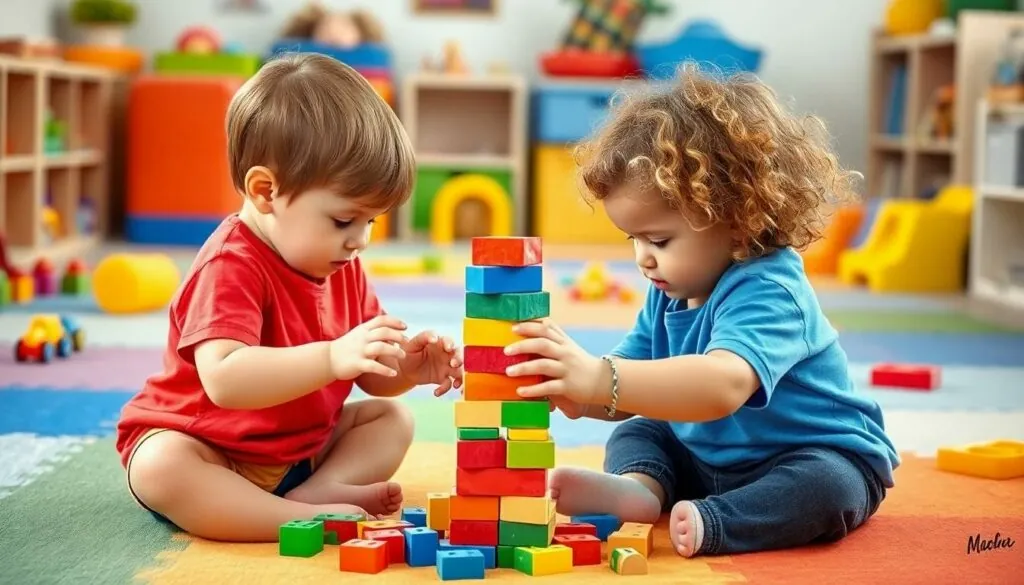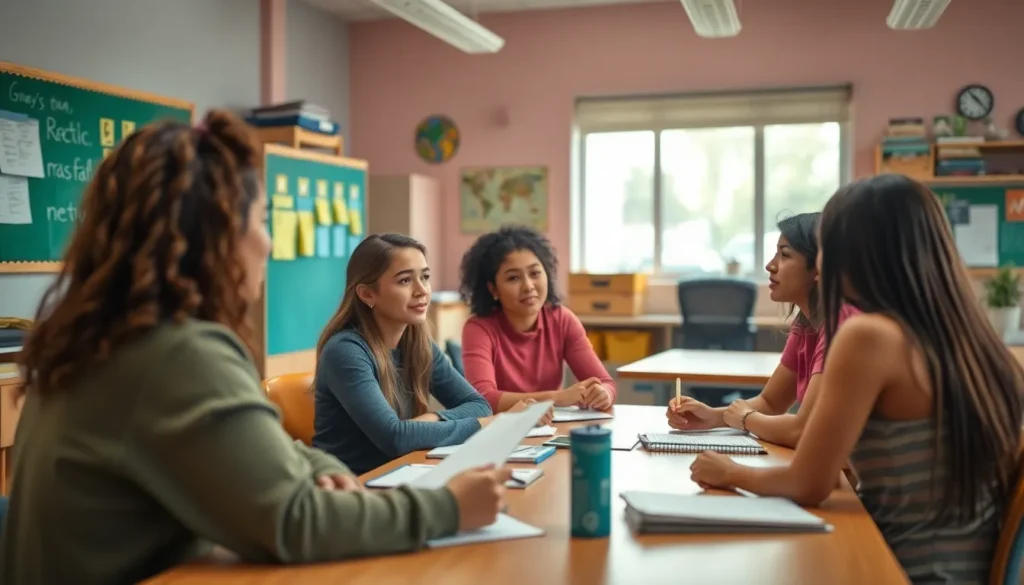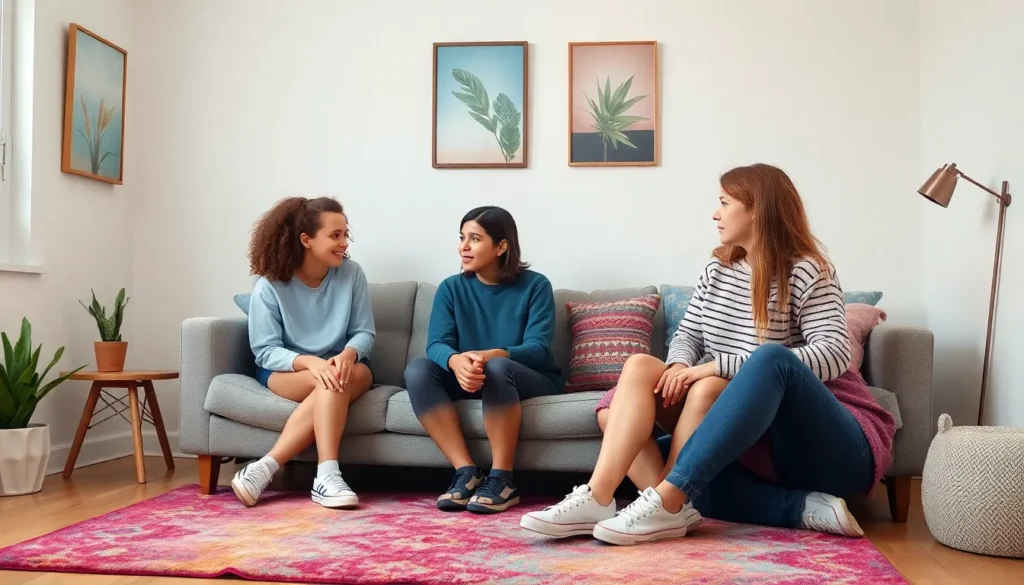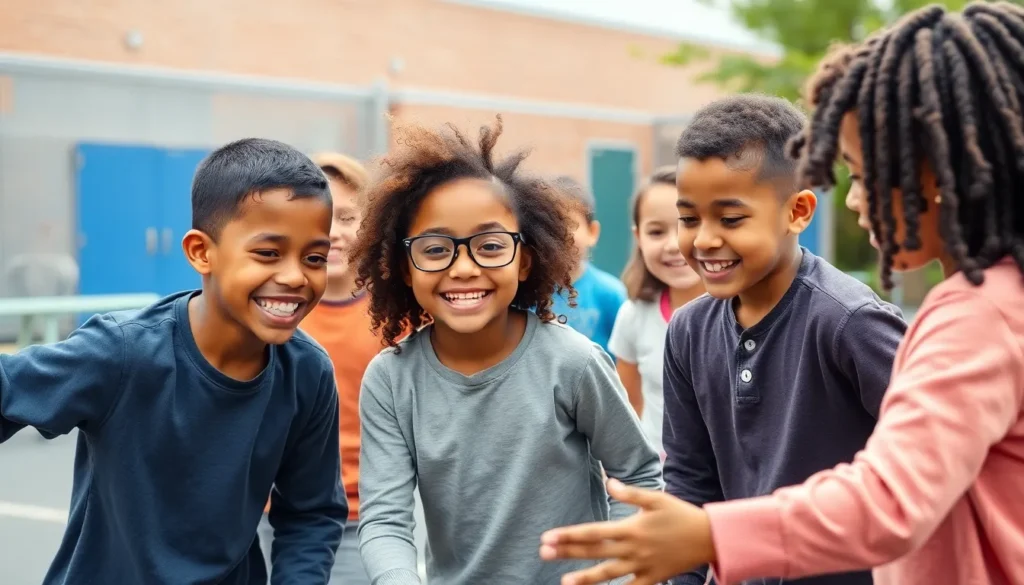In the colorful world of child development, parallel play is like the introverted cousin at a family reunion—quietly engaging but still very much part of the fun. Picture this: two toddlers, each deeply focused on their own tower of blocks, occasionally glancing at each other like they’re in a secret competition. While they might not be sharing toys or exchanging words, they’re laying the groundwork for social skills that will come in handy later.
Table of Contents
ToggleWhat Is Parallel Play in Child Development
Parallel play involves children engaging in similar activities while remaining separate in their interactions. Two toddlers can often be seen playing side by side, each focused on building their own block towers. They may observe one another, showing interest, but their actions remain independent.
This type of play typically occurs between the ages of 2 and 3 years. At this stage, children start exploring their social environment without the necessity for direct interactions. While they may not share toys or communicate verbally, they learn important lessons about cooperation and observation.
Developmentally, parallel play lays a foundation for more complex social interactions. By observing peers, children can develop critical social skills. They learn to understand turn-taking and can experience the joy of shared play without direct communication.
Research highlights the significance of parallel play in fostering social skills. Studies show that children who engage in parallel play develop stronger communication abilities and adaptability in friendships. Typically developing children learn to negotiate and share when they transition to associative play, the next stage of play development.
Encouraging parallel play can be beneficial for preschool settings. Providers can set up areas where children can independently explore while remaining near their peers. This setup offers chances for observation and minimal interaction, promoting a sense of community without overwhelming social pressures.
Parallel play serves as a valuable phase in child development. Its role in building foundational social skills paves the way for more interactive forms of play, enhancing children’s overall social experiences.
Characteristics of Parallel Play
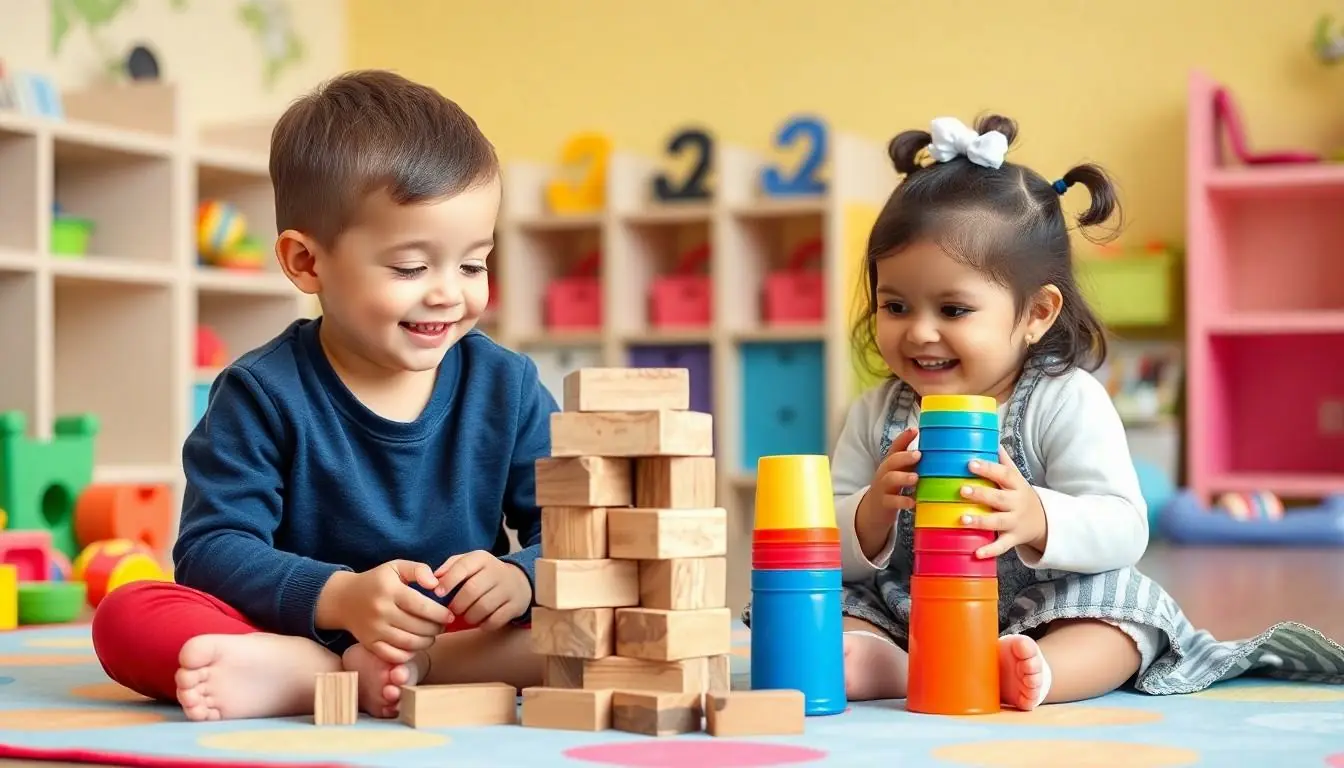
Parallel play involves children playing side by side, often engaging in similar activities without direct interaction. This aspect of child development allows for exploration and learning within a social context, even if children remain focused on their own play.
Definition and Overview
Parallel play describes a developmental stage where children participate in the same type of activity while maintaining individual focus. For example, a toddler might build a tower of blocks beside another toddler doing the same. They may glance at each other’s creations but do not engage in cooperative play. This form of play emphasizes observation and learning without the pressures of direct interaction. According to scholars, engaging in parallel play fosters essential social skills that serve as a foundation for later interactive play experiences.
Age Range for Parallel Play
Typically, parallel play emerges between the ages of 2 and 3 years. Children in this age bracket express a growing interest in their surroundings. During this stage, they demonstrate curiosity about others while still preferring their own space. Some children may exhibit signs of parallel play earlier or later than the typical range. Shifts in play behaviors occur gradually, eventually leading to associative play. Observing children in this age range reveals their unique ability to explore creativity using their independent play style while remaining aware of their peers.
Importance of Parallel Play
Parallel play plays a crucial role in child development, acting as a bridge towards more complex social interactions. This form of play fosters essential skills that influence children’s future relationships.
Social Development Benefits
Social development during parallel play helps children learn from observing others. As they engage in similar activities, they pick up cues on social norms and behaviors. This stage allows them to practice non-verbal communication, which lays the groundwork for friendships. Cooperative skills emerge as children share their surroundings, leading to stronger social connections over time. Encouraging these interactions supports empathy, as they learn to recognize and respond to others’ feelings. Overall, parallel play becomes a foundation for future collaborative play experiences.
Cognitive Development Benefits
Cognitive development thrives during parallel play, as children explore problem-solving skills independently. They think critically while engaging in their activities and navigating their surroundings. Curiosity sparks creativity, allowing them to experiment and devise new ideas. Observing peers inspires innovative thinking, leading to improved adaptability. This play stage encourages focus, increasing their attention span as they engage in tasks. Such skills enhance overall cognitive abilities, preparing them for more complex challenges in future collaborative play.
How to Encourage Parallel Play
Encouraging parallel play fosters social development in children. Parents and educators can implement strategies that support this important stage.
Suitable Activities and Toys
Choosing suitable activities and toys enhances parallel play experiences. Consider providing building blocks, art supplies, or construction sets, as these options engage multiple children simultaneously. Open-ended toys stimulate creativity while allowing independent exploration. Play mats or large tables create space for shared activities like puzzles or crafts. Engaging in similar tasks can promote kinship through shared interests, even without direct interaction. Observing each other can lead to informal learning, as children might mimic actions or ideas. Selecting toys that invite collaboration makes it easier for children to play alongside peers, enhancing their social skills as they work in close proximity.
Creating the Right Environment
Creating a supportive environment is essential for parallel play development. Design spaces with defined areas for different activities, allowing children to explore freely while remaining near peers. Ensure accessibility to age-appropriate materials that spark interest and curiosity. Using natural light and inviting colors can make play areas more appealing. Limit distractions to help children focus on their individual tasks while being aware of their surroundings. Incorporating cozy nooks or soft seating can encourage comfort during play. Above all, establishing a low-pressure atmosphere allows children to express themselves without the need for constant interaction, reinforcing their self-sufficiency while remaining connected to others.
Parallel play is a crucial developmental stage that lays the foundation for children’s social and cognitive growth. By engaging in similar activities while maintaining their independence, children learn valuable skills such as observation and empathy. This phase not only fosters creativity and problem-solving but also prepares them for future interactions with peers.
Encouraging parallel play through appropriate activities and a supportive environment allows children to thrive socially without feeling overwhelmed. As they navigate this important stage, they’re cultivating the skills necessary for more complex relationships and collaborative play experiences. Understanding the significance of parallel play can help parents and educators nurture children’s development effectively.

